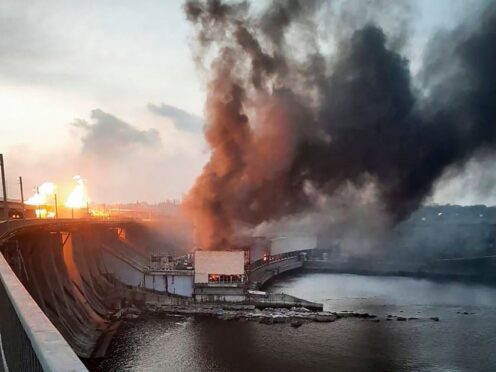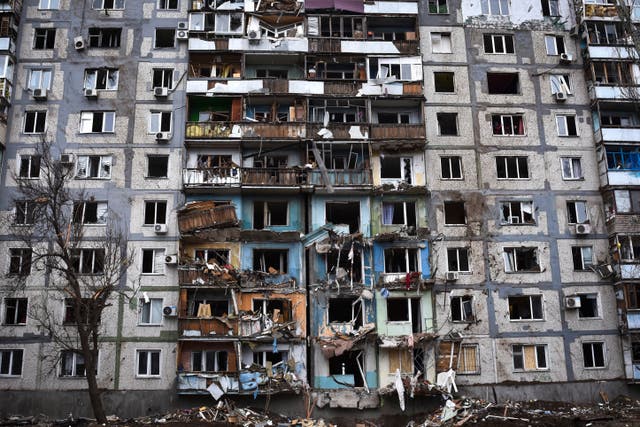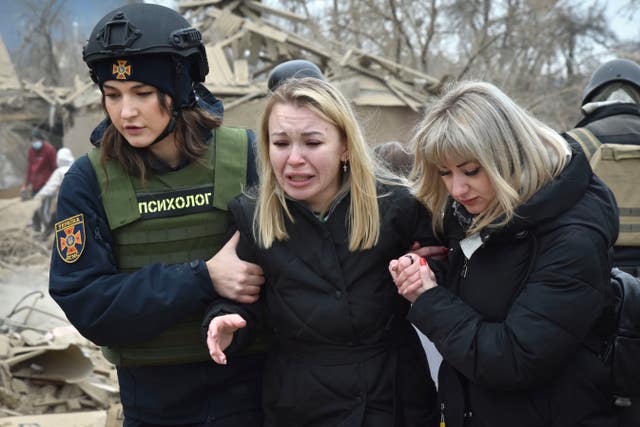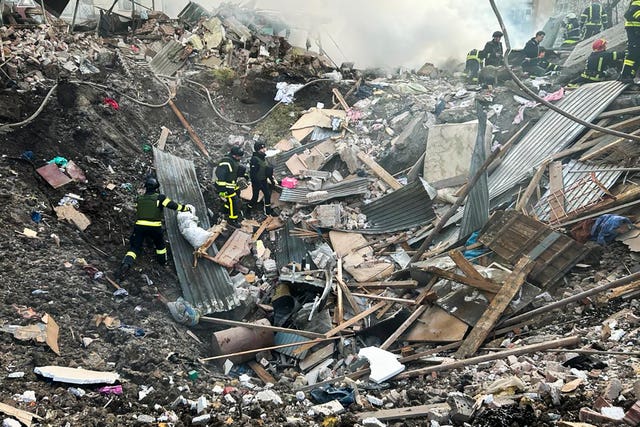
Russia has unleashed one of its most devastating attacks against Ukraine’s electric sector, an aerial assault it said was retaliation for recent strikes inside Russia and which could signal an escalation of the war.
It comes just days after President Vladimir Putin cemented his grip on power in a preordained election.
Many Ukrainians were plunged into darkness across several cities, at least five people were killed, and damage to the country’s largest hydroelectric plant briefly cut off power to a nuclear plant that has been a safety risk throughout the war.

Russia fired off more than 60 exploding drones and 90 missiles in what Ukrainian officials described as the most brutal attack against its energy infrastructure since the full-scale war began in early 2022.
Kharkiv, Ukraine’s second-largest city, sustained the most damage, officials said, and the attack came a day after Russia had fired 31 missiles into the Ukrainian capital Kyiv.
Ukrainian President Volodymyr Zelensky has been urging Western allies for weeks to provide it with additional air defence systems and ammunition, a period in which 60 billion dollars in US aid has been held up by divisions in Congress.
“With Russian missiles, there are no delays, like with aid packages to our state,” Mr Zelensky said.
“It is important to understand the cost of delays and postponed decisions.”
Russia’s Defence Ministry called Friday’s attacks “strikes of retribution”.
Ukraine has increased shelling of Russia’s Belgorod region along its north-east border and has launched drone strikes targeting Russian oil refineries and other energy facilities.
Ukraine’s latest strike inside Russia on Friday killed one person and injured at least three, according to local officials.

Mr Putin has described Ukrainian attacks on Belgorod and other regions as an effort to frighten residents and derail the highly orchestrated election that ended on Sunday.
And he vowed to strike back.
The day after he declared victory, Mr Putin said Russia would seek to create a buffer zone inside eastern Ukraine to help protect against long-range strikes and cross-border raids.
Russia has made progress on the battlefield in recent months against exhausted Ukrainian troops struggling with a shortage of manpower and ammunition along the front line that stretches over 1,000 kilometres (620 miles).
When Mr Putin invaded in 2022, he called it a “special military operation”, and his officials have mostly eschewed the word “war”.
But in a change of rhetoric on Friday that may herald a new escalation, Kremlin spokesman Dmitry Peskov told a Russian newspaper that “when the collective West became a participant in this on the side of Ukraine, for us it already became a war”.
In the winter of 2022-23, Russia targeted Ukraine’s energy infrastructure, causing frequent blackouts across the country.
Many in Ukraine and the West expected that Russia might repeat this strategy this winter, but Russia instead focused its strikes on Ukraine’s defence industries.

While launching the strikes, Russia has combined sophisticated ballistic and cruise missiles with waves of cheap Iranian-made Shahed drones in a bid to oversaturate and weaken Ukrainian air defences.
Volodymyr Kudrytsky, head of the national utility Ukrenergo, described Friday’s barrage as the largest assault on Ukraine’s energy infrastructure since the full-scale war began.
“This attack was especially dangerous because the adversary combined different means of attack, kamikaze drones, ballistic and cruise missiles,” he said.
Strikes sparked a fire at the hydroelectric plan in Dnipro, which supplies electricity to the nuclear power plant in Zaporizhzhia, the largest such installation in Europe.
Power to the nuclear plant was lost for several hours before it was restored, International Atomic Energy Agency head Rafael Grossi said early on Friday.
The Zaporizhzhia plant has been occupied by Russian troops since the early days of the invasion, and fighting around it has raised the risk of a nuclear accident.
The dam at the hydroelectric station was not in danger of breaching, the country’s hydroelectric authority said.
A dam breach could not only disrupt supplies to the nuclear plant but could potentially cause severe flooding similar to what occurred last year when a major dam at Kakhovka further down the Dnieper River collapsed.

Attacks on energy facilities in the Kharkiv region caused blackouts and disrupted critical air raid siren systems.
Other attacks were reported in areas of western Ukraine far from the front line.
The power outages left 1,060 miners trapped in the Dnipropetrovsk region and an evacuation was under way, according to private energy company DTEK.

Enjoy the convenience of having The Sunday Post delivered as a digital ePaper straight to your smartphone, tablet or computer.
Subscribe for only £5.49 a month and enjoy all the benefits of the printed paper as a digital replica.
Subscribe